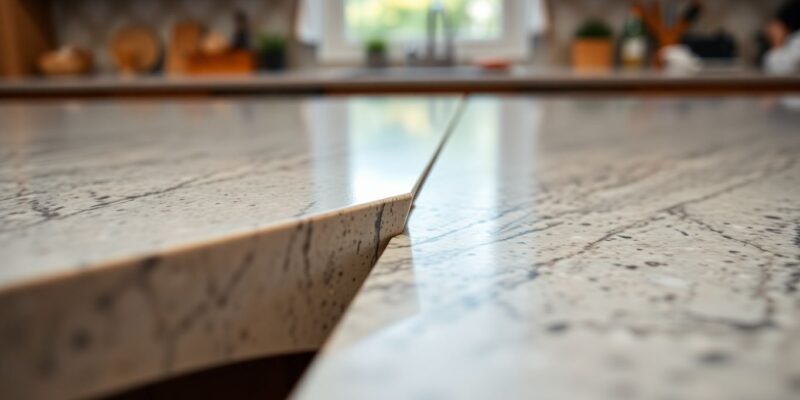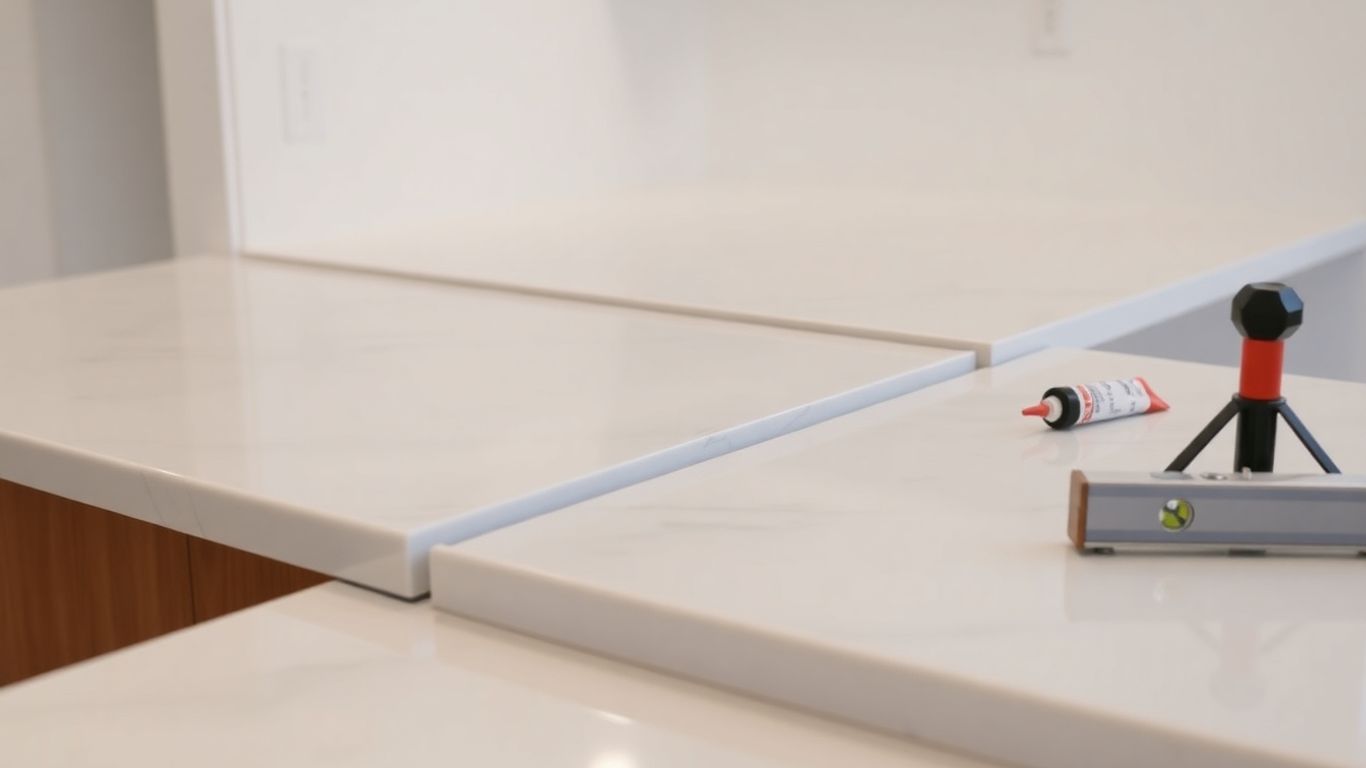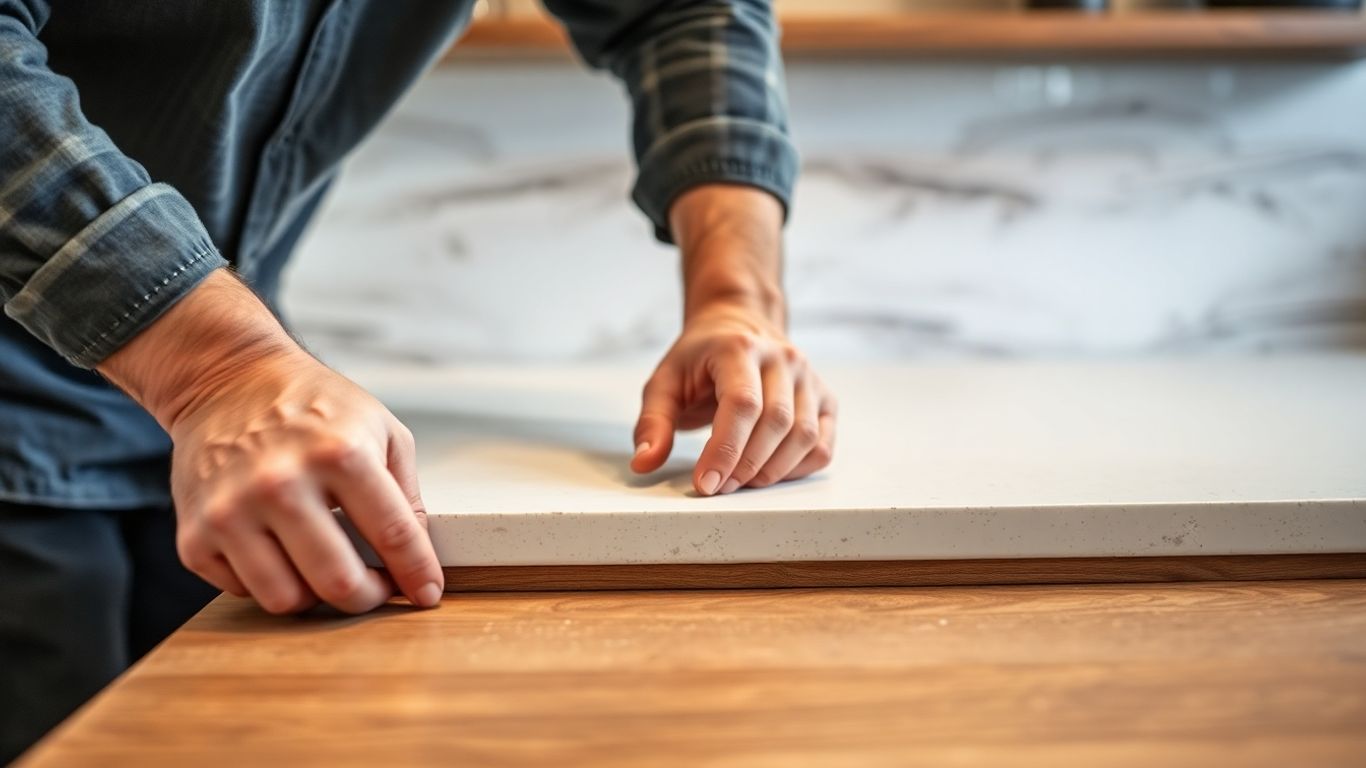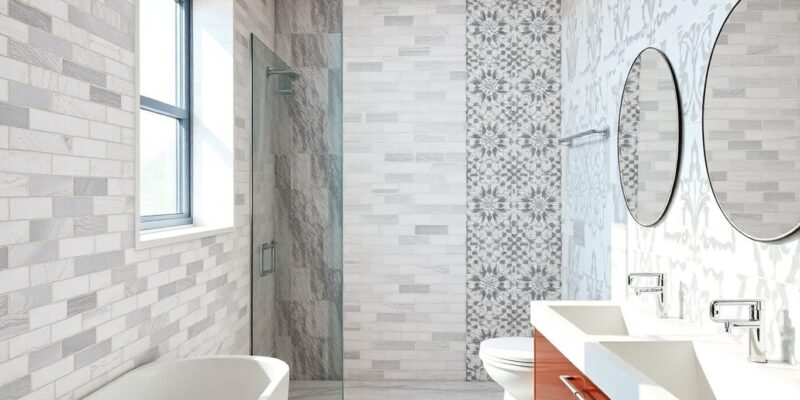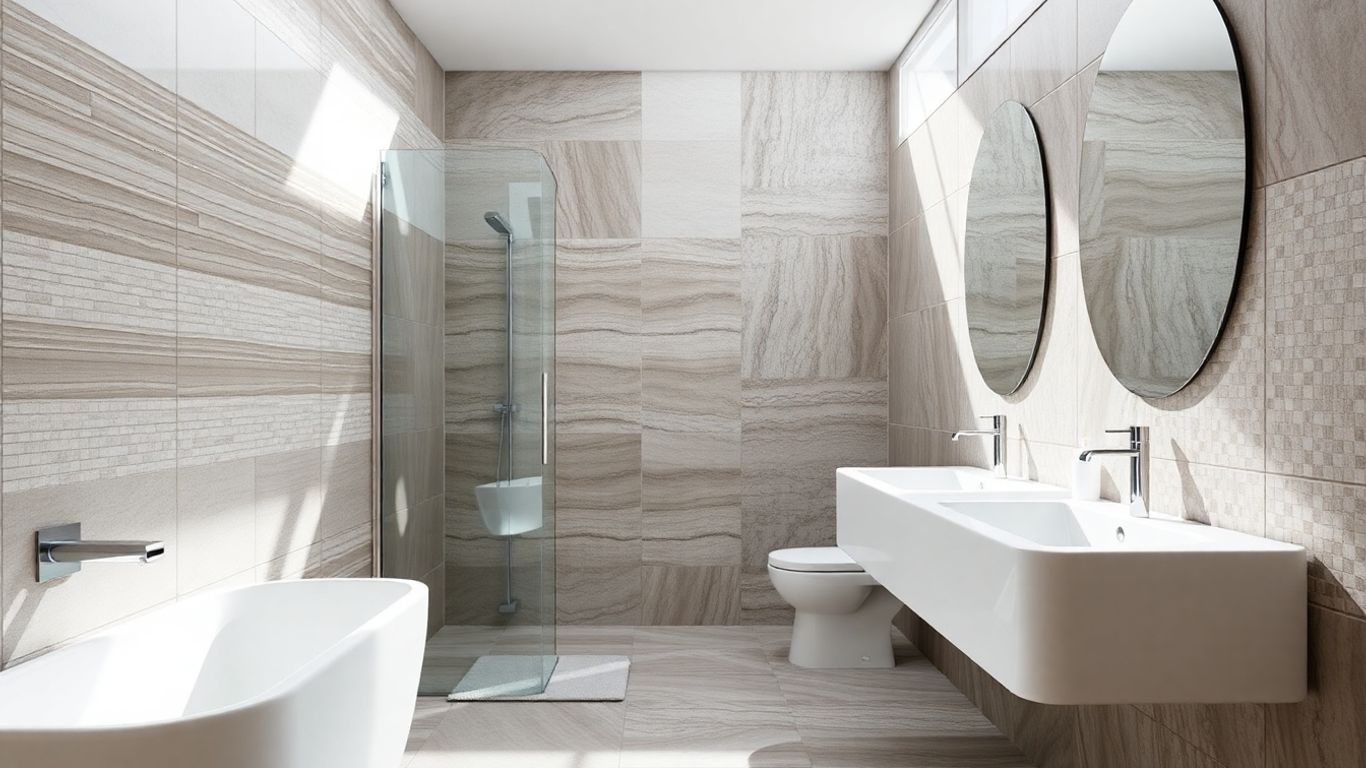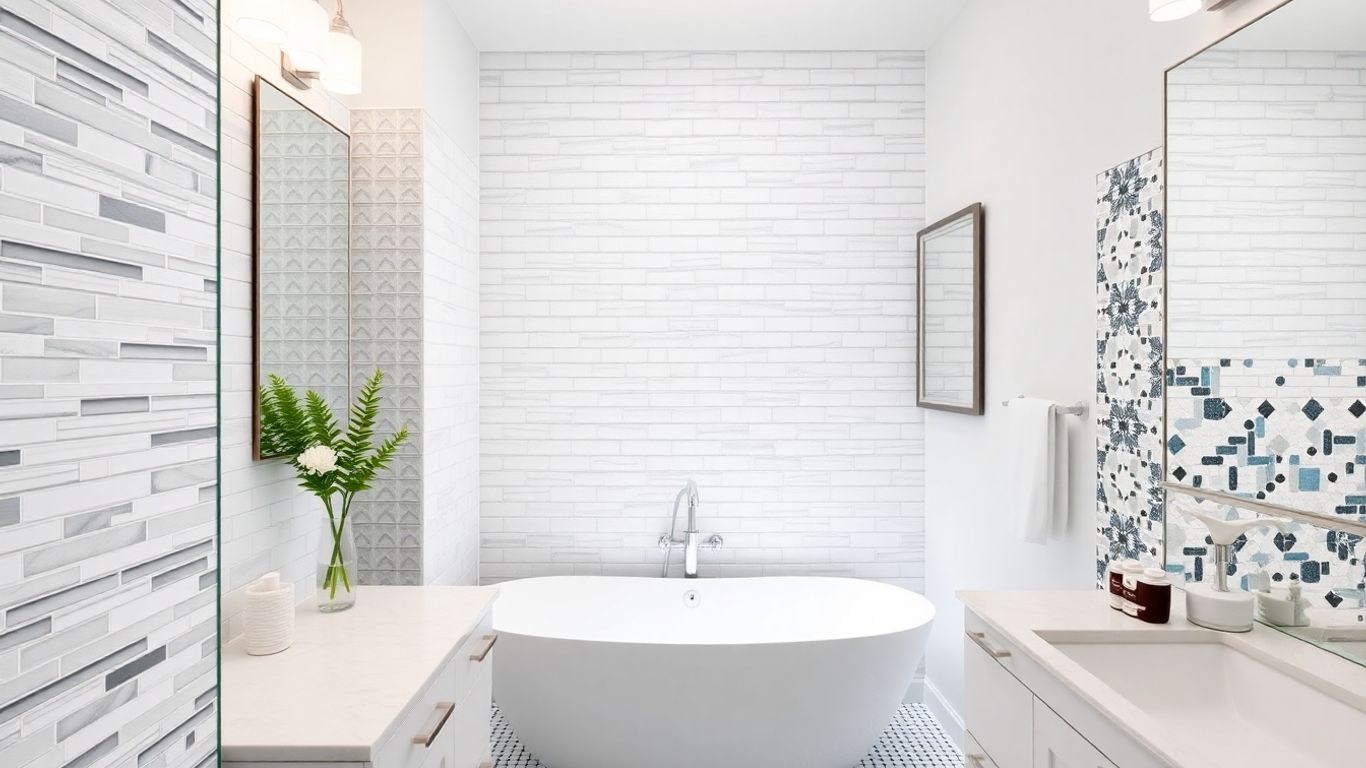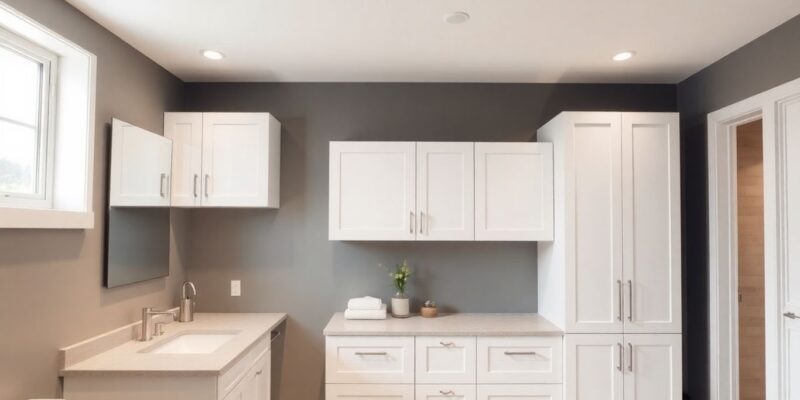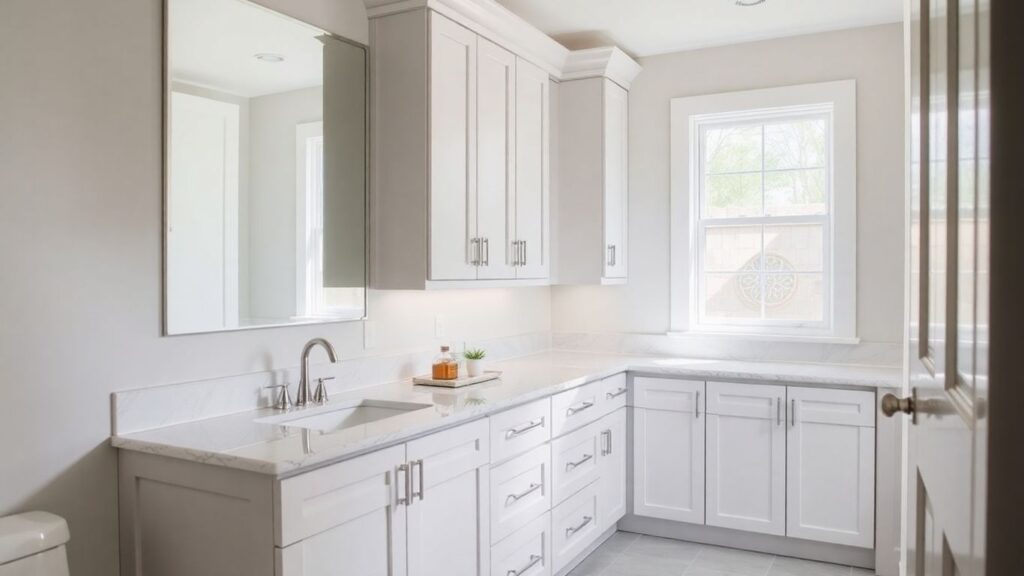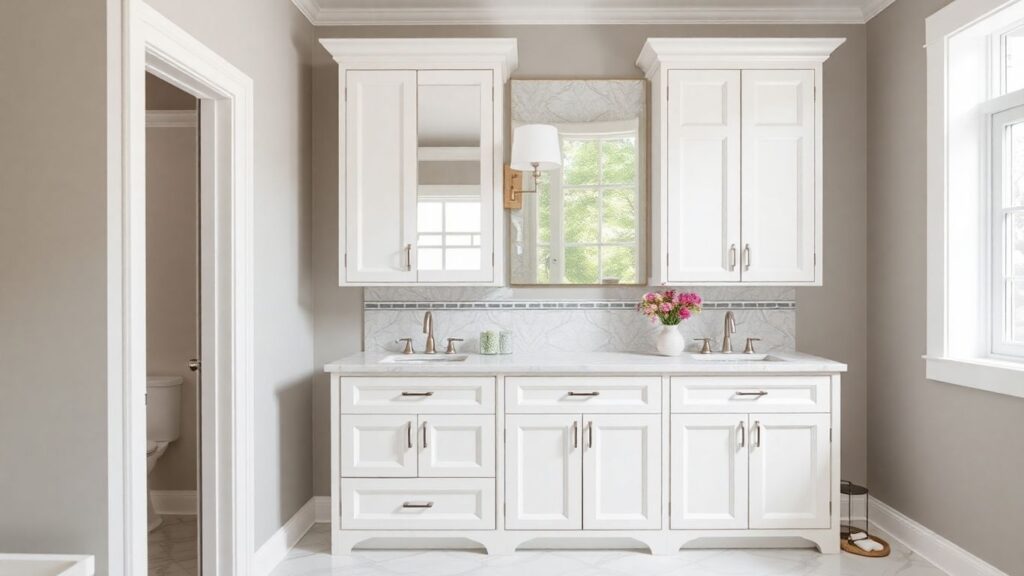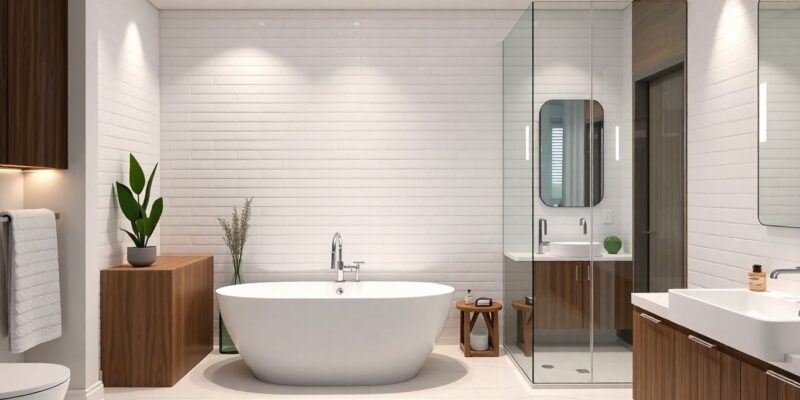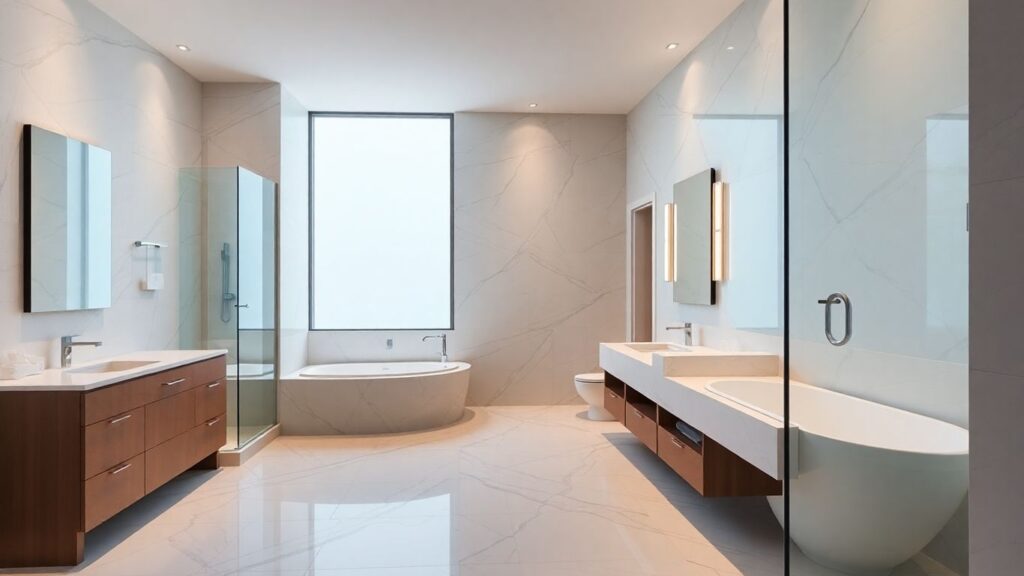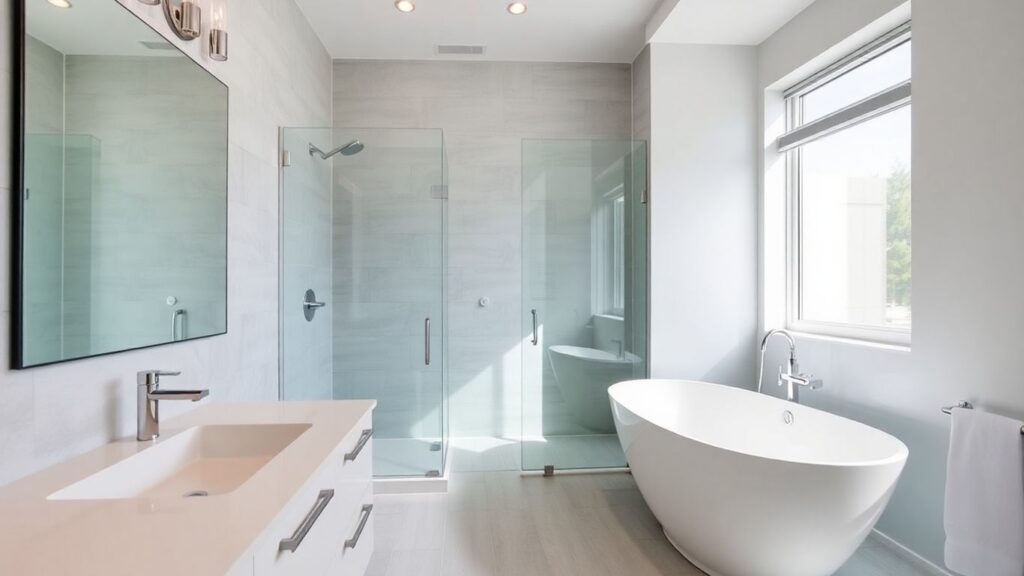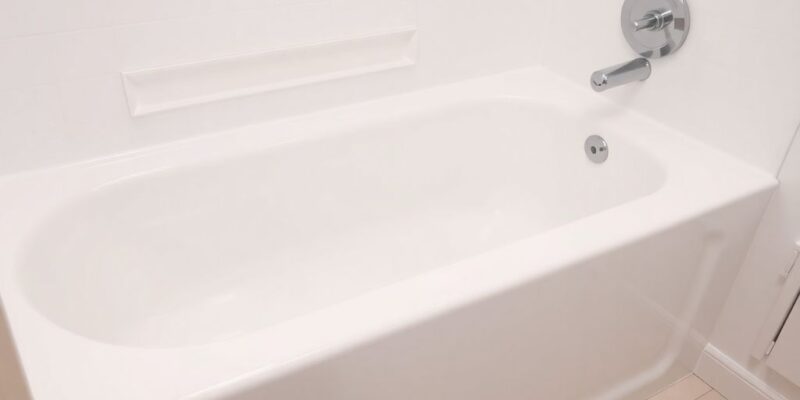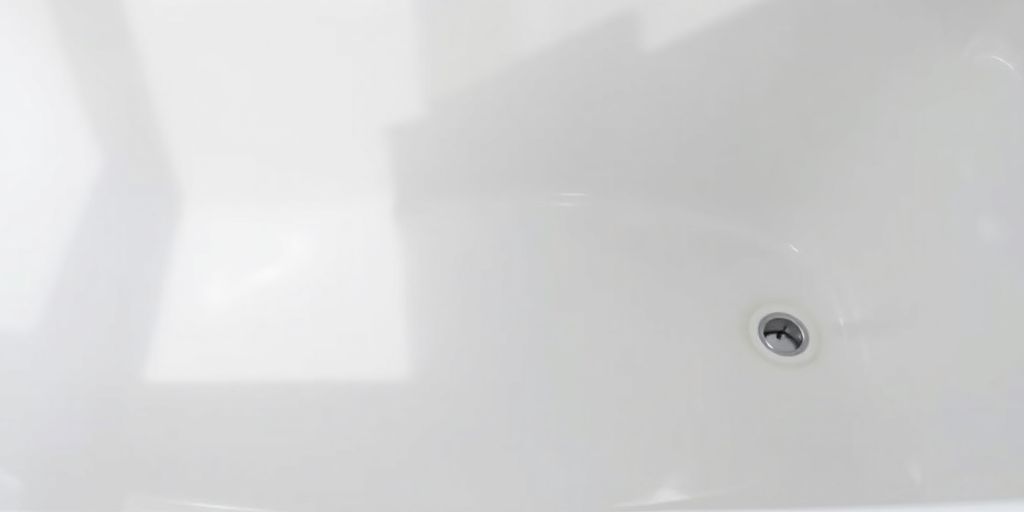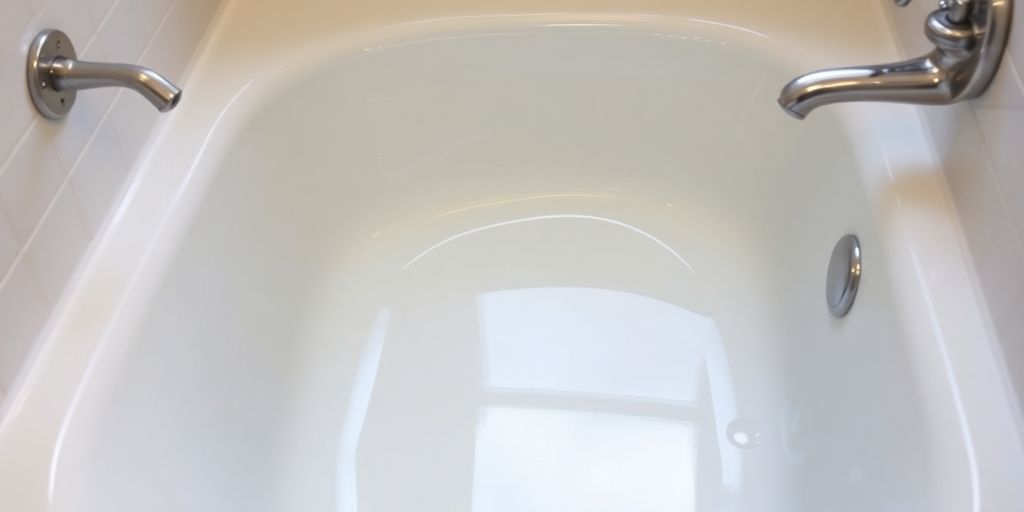Thinking about new kitchen countertops in Montreal or Laval? It’s a big change that can really make your kitchen shine. But before you pick out that perfect slab, it’s good to know about the common slip-ups people make. Getting it wrong can mean extra costs, a look you don’t love, or even problems down the road. We’ll walk you through the most frequent mistakes so you can avoid them and end up with kitchen countertops Montreal homeowners will envy.
Key Takeaways
- Choosing the right material for your kitchen countertops is key to both look and function. Consider how you use your kitchen.
- Precise measurements are non-negotiable. Double-check everything before ordering to avoid fit issues.
- While DIY is tempting, professional installation for kitchen countertops in Montreal and Laval often saves headaches and ensures quality.
- Don’t forget that countertops have weight and need proper support. This is especially important for heavier materials.
- Proper sealing and finishing protect your investment and keep your countertops looking great for years.
Kitchen Countertops Montreal & Laval – What You Need to Know Before Installation
So, you’re thinking about getting new kitchen counters in Montreal or Laval? That’s a big step, and honestly, it can feel a bit overwhelming with all the choices out there. Before you even start looking at materials or calling up contractors, there are a few things you should really get a handle on. It’s not just about picking something that looks pretty; it’s about making sure it fits your life and your kitchen.
First off, think about how you actually use your kitchen. Are you a gourmet chef who’s always got a hot pan going, or more of a microwave-and-go kind of person? Do you have kids who might spill juice or drop things? These daily habits matter. For instance, if you’re worried about heat, materials like granite are pretty forgiving. You can put a hot pot down without a second thought. On the other hand, some surfaces might scratch easily if you’re not careful. It’s all about matching the material to your lifestyle.
Here are some common countertop materials and what to consider:
- Granite: Natural beauty, each slab is unique. It’s tough and can handle heat well, but it does need sealing periodically to prevent stains. It’s a classic choice that adds value.
- Quartz: Engineered stone, very durable, non-porous, and low maintenance. It’s consistent in appearance and resistant to stains and scratches. Great for busy households.
- Dekton: A newer, super-durable option made from a mix of glass, porcelain, and quartz. It’s highly resistant to heat, scratches, and UV rays, making it ideal for modern kitchens. It also has a sleek, uniform look.
Choosing the right material is more than just aesthetics; it’s about finding a surface that can stand up to your daily life and requires a maintenance schedule you can actually stick to. Don’t pick something just because it’s trendy if it means constant worry.
When you’re planning your Kitchen Renovation Services, remember that the countertop is a major player. It’s not just about the slab itself, but how it integrates with your existing Kitchen Cabinets and the overall flow of your kitchen. Think about the edges, the sink cutouts, and how it will meet your backsplash. These details make a big difference in the final look and function. Getting custom countertop fitting Montreal services can help iron out these specifics. For those in Laval, understanding the local options for countertops Laval installation is key. It’s a significant investment, so taking the time to understand these basics will save you headaches down the road. You might even want to look into local Deck builders for other home projects, but for countertops, focus on specialists.
Mistake 1 – Choosing the Wrong Material
Picking the right countertop material is a big deal, and honestly, it’s where a lot of people stumble. You see all these beautiful slabs in showrooms, and it’s easy to get swept up. But what looks good might not actually work for your life. Think about how you actually use your kitchen. Are you a gourmet chef who’s always chopping, dicing, and spilling things? Or is it more of a quick coffee and toast kind of place?
Different materials have really different personalities. For example, granite is super tough and can handle heat, which is great if you’re always putting hot pans down. But it needs sealing regularly, or it can stain. Quartz, on the other hand, is basically maintenance-free and doesn’t stain easily, but it can be damaged by really high heat. Marble is gorgeous, really high-end, but it scratches and stains if you even look at it wrong. It’s definitely not for the faint of heart or the messy cook.
Here’s a quick rundown of some popular choices and what to watch out for:
- Granite: Pros: Durable, heat-resistant, unique patterns. Cons: Needs sealing, can chip, and is heavy.
- Quartz: Pros: Low maintenance, stain-resistant, wide variety of colours. Cons: Can be damaged by extreme heat, can be pricey.
- Marble: Pros: Elegant, classic look. Cons: Prone to staining and etching, requires frequent sealing, and is softer than granite.
- Laminate: Pros: Affordable, lots of styles. Cons: Not very heat or scratch-resistant, can look less premium.
- Butcher Block (Wood): Pros: Warm look, can be repaired. Cons: Needs regular oiling/sealing, can scratch and stain, not great with water.
Don’t just pick what looks best in a picture. Think about your daily routine, how much time you want to spend cleaning, and what kind of wear and tear your countertops will actually go through. It’s a long-term investment, so you want it to last and still look good years from now.
Seriously, take the time to research. Ask questions at the showroom about durability, maintenance, and what kind of warranty you get. It’s way better to figure this out before the slabs are cut and installed.
Mistake 2 – Incorrect Measurements
This is a big one, folks. You’d think it’s obvious, right? Measure twice, cut once. But when it comes to kitchen countertops, getting the measurements wrong can lead to some serious headaches and, let’s be honest, a lot of wasted money. It’s not just about the length and width of your cabinets; you’ve got to think about the depth, the overhang, and any tricky angles or cutouts for sinks and cooktops.
Even a small error of a quarter-inch can mean a countertop that doesn’t fit flush against the wall or has an awkward gap where your sink should sit.
Here’s why precise measurements are so important:
- Cabinetry Variations: Not all cabinets are perfectly square or level. You need to account for any slight imperfections to ensure the countertop sits correctly.
- Sink and Appliance Cutouts: These need to be exact. Too small, and the sink won’t fit. Too large, and you lose valuable countertop space and support around the opening.
- Seam Placement: If your countertop needs to be joined in multiple pieces, the measurement dictates where those seams will be. Poor planning here can lead to unsightly gaps or uneven joints.
- Appliance Fit: Think about your dishwasher, stove, or refrigerator. The countertop needs to allow for its proper installation and operation without obstruction.
When you’re measuring, don’t just eyeball it. Use a reliable tape measure, and if you’re unsure, it’s always better to get a professional templating service involved. They have the tools and experience to get it spot-on, saving you from costly mistakes down the line. It’s way cheaper to measure correctly the first time than to pay for a replacement slab because it doesn’t fit!
Mistake 3 – Skipping Professional Installation
Look, we get it. You’re feeling handy, you’ve watched a few videos, and you think, ‘How hard can it be to install these countertops?’ Well, let me tell you, it’s a lot harder than it looks. Trying to do it yourself, especially with materials like granite or quartz, can quickly turn into a really expensive headache. These aren’t just simple flat pieces you’re placing; they involve precise cuts, heavy lifting, and a perfect fit to avoid future problems.
Think about it: professional installers have the right tools, like specialised saws and lifting equipment, that you probably don’t have lying around. They also know how to handle the weight and awkward shapes without damaging your new countertop or your cabinets. Plus, they’re insured, which means if something goes wrong, it’s on them, not your wallet.
Here’s a quick rundown of why going pro makes sense:
- Precision: They get those seams tight and edges perfect, making a huge difference in the final look.
- Safety: Heavy slabs of stone are no joke. Professionals know how to move them safely.
- Time Savings: What might take you a weekend of frustration, they can often do in a day.
- Warranty Protection: Many countertop manufacturers require professional installation to keep the warranty valid.
Trying to save a few bucks by doing it yourself often ends up costing more in the long run. You might end up needing to repair or even replace a poorly installed countertop, not to mention the stress of dealing with a botched DIY job. It’s usually worth the peace of mind to let the experts handle it.
Mistake 4 – Ignoring Support and Weight Considerations
So, you’ve picked out the perfect countertop material for your Montreal kitchen. That’s great! But before you get too excited, let’s talk about something really important: making sure your cabinets can actually hold it up. Some materials, like thick granite or solid quartz, are seriously heavy. If your existing cabinets aren’t built to handle that kind of weight, you could end up with sagging shelves or, worse, a countertop that pulls away from the wall.
It’s not just about the weight, but also how that weight is distributed. A heavy slab needs a solid foundation. Think about your kitchen layout – do you have an island with an overhang? That overhang needs proper support, usually with brackets or a reinforced cabinet structure, to prevent it from tipping or cracking. Ignoring this can lead to some pretty expensive and dangerous problems down the line.
Here’s a quick rundown of what to consider:
- Cabinet Strength: Are your current cabinets sturdy enough? Older or particleboard cabinets might not be up to the task. You might need to reinforce them or even upgrade.
- Overhang Support: If your countertop extends beyond the cabinets (an overhang), you absolutely need support. This could be specialised brackets or a thicker countertop slab itself.
- Material Density: Different materials have different weights. A thin laminate is light, but a 3cm thick marble slab is a different story entirely. Always check the specs for your chosen material.
When you’re looking at new countertops, it’s a good idea to talk to your installer about the structural needs. They can tell you if your current cabinets are suitable or what modifications might be necessary. It’s better to find out now than after the new countertop is installed and is causing issues. You can find great advice on home improvements from professionals who help people find their dream homes, like LJ Realties.
Don’t skimp on this part. A beautiful countertop is only as good as the support system underneath it. Getting this right from the start saves you a lot of headaches and potential repair bills later on.
Mistake 5 – Poor Sealing and Finishing
So, you’ve picked out the perfect countertop material, got it measured and installed. Great! But wait, there’s one more thing that can really mess things up if you’re not careful: the sealing and finishing. This part is super important, kind of like the final polish on a car. If it’s not done right, your beautiful new counter could end up looking sad pretty quickly.
Think about it. If your countertop isn’t sealed properly, liquids can just soak right in. We’re talking about spills from your morning coffee, that splash of red wine at dinner, or even just water in the bathroom. A good seal acts like a shield, keeping stains and moisture from getting into the material. Without it, you might start seeing rings or discoloured spots that are a real pain to get out, especially if you have porous materials like some natural stones. Even in a basement bar area, a poorly sealed surface can absorb odours or get damaged by condensation.
Here’s a quick rundown of what to watch out for:
- The Right Sealant: Not all sealants are created equal, and what works for one material might be a disaster for another. Your installer should know exactly what to use for your specific countertop. Using the wrong stuff can actually damage the finish or not provide any protection at all.
- Even Application: It’s not just about using the right product; it’s about applying it evenly. You don’t want thick patches or missed spots. This can lead to uneven protection and a less-than-perfect look.
- Proper Curing Time: Most sealants need time to dry and cure properly. If you start using your countertop heavily before it’s fully cured, you can ruin the seal before it even gets a chance to do its job.
- Edge and Underside Attention: Don’t forget the edges and the underside, especially where the countertop meets the wall or cabinets. These areas can also be vulnerable to moisture if not sealed correctly.
Finishing is also about how smooth and polished the surface looks. Sometimes, after installation, there might be small imperfections or rough edges. A good finishing job means these are smoothed out, making the countertop not only functional but also a real visual asset to your kitchen or bathroom.
Skipping the proper sealing and finishing steps is like buying a fancy new outfit but forgetting to iron it. It just doesn’t look as good, and it’s more likely to get damaged. This is especially true for surfaces that see a lot of action, like kitchen counters or bathroom vanities, where spills and moisture are common. Taking the time to get this right from the start saves a lot of headaches later on.
Mistake 6 – Overlooking Maintenance Needs
So, you’ve got these beautiful new countertops installed in Montreal or Laval, and they look amazing. But here’s the thing: they won’t stay that way if you just forget about them. It’s like getting a new car and never washing it – eventually, it just won’t look as good. Proper upkeep is key to keeping your investment looking sharp for years.
Different countertop materials need different kinds of attention. What works for quartz might not be the best for granite, and definitely not for something like marble. You really need to know what you’re dealing with.
Here’s a quick rundown of what to keep in mind:
- Daily Wiping: Most surfaces, especially granite and quartz, just need a quick wipe-down with a soft, damp cloth after use. This gets rid of crumbs and minor spills before they become a problem.
- Dealing with Spills: Don’t let liquids sit on the counter. Things like red wine, coffee, or oil can stain if they have too much time to soak in, especially on porous materials. Wipe them up right away.
- Cleaning Products: This is a big one. Avoid harsh chemicals, especially acidic ones like vinegar or bleach, and definitely steer clear of abrasive scrubbers or steel wool. They can etch the surface or strip away protective sealants.
- Sealing (When Needed): Some materials, like natural granite, might benefit from periodic sealing to prevent stains. Check with your installer or the manufacturer to see if this is recommended for your specific countertop and how often it should be done.
Ignoring the specific care instructions for your countertop material is a common oversight. It might seem like a small detail, but it can significantly impact the longevity and appearance of your surfaces. Think of it as part of the overall renovation services you’ve invested in; you want to protect that investment.
If you’re unsure about the best way to care for your countertops, don’t hesitate to ask the professionals who did the installation. They can give you the right advice for your specific material. It’s way easier to do a little bit of regular maintenance than to deal with a costly repair or replacement down the line.
Conclusion
So, we’ve gone over a few common slip-ups people make when getting new kitchen countertops in Montreal and Laval. It’s easy to get excited about that beautiful new surface, but taking a moment to think through the material, get the measurements just right, and consider who’s actually doing the installing can save you a lot of headaches later on. Paying attention to these details up front really makes a difference in the long run.
Think about it: a poorly installed countertop might look okay for a bit, but if it’s not supported right or sealed properly, you could be looking at cracks or stains sooner than you’d like. And if you’re not sure about the upkeep for a particular stone or composite, that’s a whole other can of worms. It’s always better to ask questions and be prepared.
Here’s a quick rundown of what to keep in mind:
- Material Choice: Does it fit your lifestyle? Is it tough enough for your cooking habits?
- Accurate Measurements: Double-check, then triple-check. Small errors here can cause big problems.
- Professional Help: Unless you’re a seasoned pro, hiring someone experienced is usually the way to go.
- Support & Weight: Make sure your cabinets can handle the load, especially with heavier materials.
- Finishing Touches: Proper sealing protects against spills and keeps things looking good.
Ultimately, getting new countertops is an investment. You want them to look great and last for years. Avoiding these common mistakes means you’re more likely to end up with a kitchen you love, without the unexpected repair bills or frustrations.
Don’t be afraid to ask your installer questions about everything from the type of adhesive they use to how to clean your specific countertop material. A good installer will be happy to share that information. It’s all part of making sure your new kitchen centrepiece is perfect.
We’re here to help you build your dream space. Whether it’s a new kitchen, a modern bathroom, or a complete home makeover, our team is ready. Don’t wait to start your project. Visit our website today to learn more about our services and get a free quote!
Frequently Asked Questions
What are the most common mistakes people make when getting new kitchen countertops in Montreal or Laval?
Some common slip-ups include picking the wrong material for your needs, like a soft stone that scratches easily for a busy kitchen. Another big mistake is not measuring precisely, which can lead to gaps or ill-fitting countertops. Many people also try to install them themselves without the right skills, or forget to think about how heavy the countertop is and if the cabinets can support it. Not sealing or finishing the countertop properly and ignoring how to care for it afterwards are also frequent errors.
Why is choosing the right countertop material so important?
The material you choose sets the tone for how your kitchen looks and how easy it is to use. Some materials, like granite, are super tough and can handle heat, making them great for cooking. Others, like marble, look beautiful but need more careful cleaning because they can stain or etch easily. Picking a material that fits how you cook and clean is key to avoiding problems later on.
Can I measure my countertops myself, or should I hire a pro?
While you can measure yourself, it’s usually best to have professionals do it. They have the tools and experience to get exact measurements, especially around corners, sinks, and appliances. Even a small error can cause big problems during installation, leading to extra costs or a countertop that doesn’t fit right.
Is it really necessary to hire a professional installer for kitchen countertops?
Yes, it’s highly recommended! Installing countertops, especially heavy ones like granite or quartz, requires specific skills and equipment. Professionals know how to handle the material safely, ensure it’s perfectly level, and attach it securely. A bad installation can lead to cracks, uneven surfaces, or even damage to your cabinets.
What kind of support do countertops need?
Countertops need strong support. Your cabinets must be sturdy enough to hold the weight of the countertop material. For heavier materials like granite, extra support might be needed, such as a plywood sub-top or reinforced cabinet frames. Ignoring this can cause your cabinets to sag or even break over time.
How important is sealing and maintenance for new countertops?
Sealing is crucial for certain materials, like natural stone, to protect them from stains and moisture. It creates a barrier that stops liquids from soaking into the surface. Proper maintenance, like using the right cleaners and avoiding harsh chemicals, helps keep your countertops looking great and lasting longer. Always follow the manufacturer’s care instructions.

